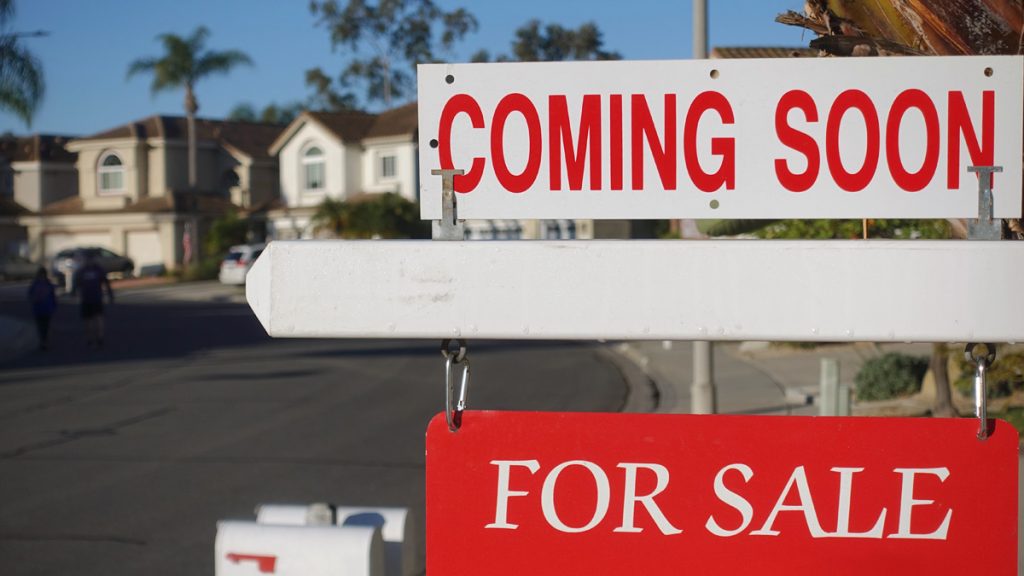Step-by-Step Guide to Selling Your House in San Diego, CA

Selling a house in San Diego can be a sticky wicket due to the dynamic nature of the real estate market today. As a seller, you might be inundated with questions, decisions, and tasks that could lead to some pretty confusing moments. Not to worry. We’ve got answers. Here is a step-by-step guide to help you in navigating the complex process of selling your home in San Diego, making it a more manageable and successful experience, with minimal stress.
Table of Contents
- 1. Decide if You Need an Agent
- 2. Pick a Move-Out Date
- 3. Make Necessary Repairs
- 4. Set Your Asking Price
- 5. Prepare Your Home for the Sale
- 6. Get a Professional Photographer
- 7. List and Market Your House
- 8. Manage Showings
- 9. Review, Compare, and Negotiate Offers
- 10. Complete the Inspection and Appraisal
- 11. Provide All Required Disclosures
- 12. Close the Sale
- Conclusion
1. Decide if You Need an Agent
The first big decision you’ll face on your home-selling journey is whether to enlist the help of a real estate agent or go the solo route. Each option has pros and cons, but we’re going to lean toward hiring an agent here (for good reasons, of course!).
Working with a Realtor in San Diego brings many benefits to the table. These professionals know the local market like the back of their hand, which means they can help you determine the right price for your home. Real estate experts also have an extensive network of potential buyers and other agents, making it easier to market your property effectively. Plus, they’ll guide you through the complex paperwork, negotiate on your behalf, and help you avoid common pitfalls when selling a house in San Diego.
While you may save on agent fees by going solo, the time, stress, and potential missteps can cost you more in the long run. So, consider teaming up with a knowledgeable local real estate agent for a smoother and potentially more profitable sale.
2. Pick a Move-Out Date
Now that you’ve decided to hire a real estate agent or not, the next step is to establish a move-out date. This date is significant for planning the general home preparation and selling timeline. Setting a clear timeline ensures you have enough time to get your house in tip-top shape before listing it on the market.
Typically, it’s wise to allow a few weeks or even months to prepare your home for sale. This preparation involves decluttering, cleaning, and addressing any necessary repairs. You may need a shorter or longer timeline, depending on your property’s condition. Your agent can give you guidance based on your specific situation.
Additionally, don’t forget to consider your own moving plans and the closing date. You’ll want to ensure you’re not left in a housing limbo, so coordinating your move-out date with the closing date is crucial.
3. Make Necessary Repairs
Before you list your home, addressing any necessary repairs is crucial. Buyers in San Diego, like anywhere else, want a property that’s move-in ready or at least close to it. Common repairs may include:
- Fixing leaky faucets
- Patching up drywall dings
- Replacing broken tiles
- Ensuring all appliances are in good working order
Ask your agent to help you assess your home’s condition and suggest which repairs are essential for maximizing your property’s value. While it may seem like a hassle, taking care of these repairs now can potentially save you from price negotiations and delays once your home is on the market.
Remember, first impressions matter. When prospective buyers walk into your home and see everything in tip-top shape, they’ll be more likely to envision themselves living there, which can lead to a quicker sale.

4. Set Your Asking Price
Now, let’s talk about the heart of the matter—the price of your home. Setting the right asking price is paramount to landing the right buyers and securing a successful sale. There are several key factors to consider when determining the price:
Market Conditions
First, take a close look at the local real estate market. San Diego’s real estate market can vary by neighborhood, so your agent can provide you with insights into the current conditions, including average home prices, price trends, and the availability of homes in different price ranges.
Property Condition
Next, consider the condition of your property. A well-maintained home can often command a higher price than a similar property needing repairs.
Comparable sales are another essential factor. Your real estate agent can get you a comparative market analysis (CMA). This evaluates recent sales of similar homes in your neighborhood. This analysis will help you understand the market’s reaction to similar properties.
Remember, setting the right price is a blend of science and art. It requires market knowledge, data analysis, and a bit of intuition. Your real estate agent can help you nail down your home’s competitive yet profitable asking price.
5. Prepare Your Home for the Sale
Once you’ve set your asking price, it’s time to prepare your home for the sale. This is where the magic happens—transforming your property into a buyer’s dream home.
Start with decluttering: Remove personal items, extra furniture, and anything that doesn’t contribute to a clean and spacious atmosphere. The objective here is to help potential buyers envision themselves living in the space.
Tackle necessary repairs and updates: Most of these should already be taken care of if you’ve followed the previous step. Make sure everything is in working order, from light fixtures to appliances.
Thoroughly clean your entire home: A perfectly clean home reflects your meticulous attention to detail. From immaculate baseboards to sparkling fixtures, make sure every corner is radiant. Also, eliminate any odors to ensure your home is as fresh as the California breeze.
Embrace Staging: Your agent may suggest staging your home to make it more inviting. Consider rearranging furniture, adding fresh flowers, and giving your space a warm and neutral feel.
Don’t forget curb appeal: The first thing potential buyers are going to see when searching for your house is the exterior. Therefore, make sure it’s welcoming and well-maintained. Plant some flowers, mow the lawn, and give the front door a fresh coat of paint if needed.
By preparing your home with the buyer’s perspective in mind, you’ll increase its appeal and improve your chances of a quick sale.
6. Get a Professional Photographer
In today’s digital age, a picture is worth a thousand words—and can also be worth thousands of dollars when selling a house in San Diego. To complement your listings and attract potential buyers, think about investing in an experienced real estate photographer.
A pro photographer knows how to capture your home’s best angles, lighting, and features. Their photos will showcase your property in the best possible way, making it more appealing to online viewers. Great photography can lead to more showings and potentially gain you a quicker sale.
Your real estate agent can recommend experienced photographers specializing in capturing homes in San Diego’s beautiful surroundings. It’s a small price to pay for something that can significantly impact your home’s marketability.
7. List and Market Your House
Once your home is prepped and photographed, it’s time to list and market your property. Your real estate agent will play a central role in this step. They’ll create a comprehensive listing that showcases your home’s features, including high-quality photos, detailed descriptions, and all the selling points that make it unique.
When done well, marketing is key to attracting potential buyers. Your agent will implement various marketing strategies, both online and offline, to maximize exposure. This can include online listings, social media promotions, open houses, and more.
When marketing your home, keep in mind San Diego’s lifestyle. Highlight the local amenities, including the beautiful beaches, vibrant cultural scene, and proximity to downtown San Diego and other attractions. Showcasing what life in your neighborhood has to offer can be a powerful marketing tool.

8. Manage Showings
As potential buyers show interest in your property, you’ll need to manage showings. This step can include open houses and in-person showings.
Open Houses
When hosting open houses, ensure your home is clean, staged, and inviting. You can do this yourself, or your agent can help you coordinate these events and provide guidance on making your home as appealing as possible.
In-Person Showings
For in-person showings, be flexible with scheduling. Buyers often want to see homes on their own time, so accommodating their requests can help you secure a sale. You may also want to consider virtual tours as an alternative viewing option.
Keep your home in the best possible condition throughout the showing process, as you never know when the right buyer might walk through the door.
9. Review, Compare, and Negotiate Offers
As offers start coming in, it’s time to review, compare, and negotiate. Your agent will guide you through this process, helping you determine the most favorable offers.
Comparing offers involves more than just looking at the sale price. Consider factors like contingencies, closing dates, and financial qualifications. Your agent will explain the nuances of each offer, ensuring you understand the implications of each.
Negotiating offers is a delicate art. Your agent will represent your interests, aiming to secure the best possible terms while maintaining a positive rapport with potential buyers. Negotiations may involve counteroffers and fine-tuning contract terms until both parties reach an agreement.
10. Complete the Inspection and Appraisal
Once an offer is accepted, you’ll move on to the inspection and appraisal phase. A home inspection is usually conducted to identify potential property issues. It’s important to address any concerns promptly, as they could affect the closing of the sale.
An appraisal is also conducted to ensure that the home’s value aligns with the sale price. The appraiser assesses the property’s condition, its features, and how it compares to similar homes in the area.
11. Provide All Required Disclosures
The real estate market in California comes with a set of complex disclosure mandates. It’s essential to comply with these requirements and provide all necessary disclosures to potential buyers.
Key aspects of California’s disclosure mandates include:
- Details about the property’s condition
- Potential hazards
- Any known issues
Your agent will help you navigate these requirements and ensure all disclosures are accurate.
Transparency is key when providing disclosures, as it builds trust between you and potential buyers. Working with your real estate agent, you’ll ensure full compliance with these regulations.
12. Close the Sale
And now, the moment you’ve been waiting for—the closing of the sale! This is where all the hard work pays off. You’ll sign the final paperwork, transfer the title, and hand over the keys to the new homeowner.
The closing process typically involves escrow and title transfer. Your agent, the escrow officer, and the title company will manage the details to ensure a smooth transaction. While it can be a bit of a paperwork marathon, the finish line is in sight.
Once the sale is closed, you’ll celebrate the successful transaction and the start of a new chapter. Congratulations! You’ve sold your home in sunny San Diego.
Conclusion
As you can see, selling a house in San Diego involves a series of well-planned steps. With thorough preparation and effective marketing, you can ace a successful sale that benefits both you and the new homeowners. Remember, each step is a significant milestone, bringing you closer to a smooth and satisfying home-selling experience. So, here’s to your successful home sale in sunny San Diego!
Media credits: Unless otherwise noted, images of concepts about selling a house in San Diego are copyright of LaJolla.com







